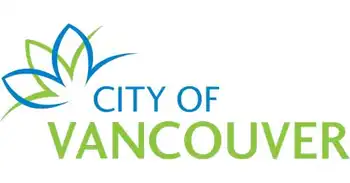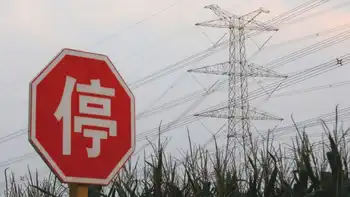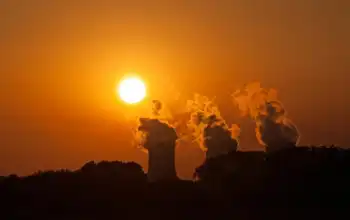Cost of buying sulfur dioxide allowances rises sharply
HOUSTON, TEXAS - One more thing to the list of rising energy-related costs: the price to pollute.
The price of sulfur dioxide allowances - a right for a power plant to emit 1 ton of sulfur dioxide under a federal pollution control program - has risen 250 percent in the past year.
Allowances that once traded for $100 topped $200 in early 2004 and shot to $700 in the last few months.
The higher prices reflect the success of the 10-year-old pollution control program and as a number of changing realities for power producers, such as the doubling of the price of low-sulfur coat and tighter expected environmental rules.
The sulfur dioxide allowance trading program was created as a way to reduce acid rain created by emissions from power plant smokestacks. It assigned a cap on sulfur dioxide emissions for the entire power industry and then created a trading system for allowances that would let companies decide whether it was more cost- effective to reduce their emissions or buy the right to pollute.
The Environmental Protection Agency's annual auction of new sulfur dioxide emission allowances, which will be unsealed today, could drive prices up even further as companies scramble to find ways to comply with their annual pollution limits.
The winning bids are likely to be close to the price of allowances traded on the open market, which was $690 per ton last week and trading as high as $705 on Monday, says Francisco Padua, a broker with Amerex Energy, a Houston-based energy brokerage. The unsuccessful bidders will need to buy allowances on the open market to meet their needs.
"They have already gone through the internal processes to get the cash for the emissions credits, so if they don't get them in the auction, they still have to get them," Padua said. "Depending on the player, they may be willing to spend a lot more to get that allowance."
The first phase of the program, launched in 1995, applied to just the largest U.S. coal-burning plants. The second phase, started in 1990, lowered the allowance cap and was applied to more power plants throughout the nation, including Texas.
The idea was that over time, as caps are lowered and the number of available allowances drops, the cost of installing cleaner technologies, such as scrubbers, becomes more attractive than paying the rising price for emission allowances.
Overall, the program is considered a success in that it has reduced sulfur dioxide emissions by more than 32 percent from 1990 levels and done it in a way that proved predictable and cost- effective to businesses. The program was the model for the Kyoto Protocol, an international pollution reduction program, and even gets decent marks from environmental advocates.
"I'd say it's a qualified success in that it accomplished what it set out to do but at a fraction of the cost forecast," said Frank O'Donnell, president of the nonprofit group Clean Air Watch. "It hasn't solved the problem of acid rain, but it has taken a step towards it."
A 2003 congressional report estimates that the program costs about $1.5 billion per year but yields as much as $77 billion in benefits, including reductions in U.S. death and illness rates, improved visibility and lower amounts of particulate matter in the air.
Why the rise in allowance prices? There are several reasons.
Many large power producers had a bank of allowances they bought pre-2000 since the first phase of the program put an excess on the market. When the cap was lowered in 2000, companies that had banked those extra allowances had to start dipping into their "savings." By 2003, power companies were buying more allowances to meet short- term compliance needs, driving up prices.
Another price driver is the doubling of the price of low-sulfur coal, which has been a key way for many plants to cut back on emissions.
Many in the industry also were buying more allowances to meet the future goals, in anticipation of the EPA's Clean Air Interstate Rule to lower sulfur dioxide caps and set limits on other pollutants.
"Usually companies don't get a clear signal until after a rule is finalized," said Brian McLean, director of the EPA's Office of Atmospheric Programs, which oversees the program. "But it's clear the prices were rising as we started to discuss the new program. They anticipated the change."
The allowance costs are encouraging companies to make the plunge in investing in scrubbers and other technologies. A study by Cambridge Energy Research Associates expects billions of dollars in scrubber projects to be completed by 2010 on as much as 35 gigawatts of power generation.
AEP, the country's largest power producer, said it expects to spend $1.2 billion on existing sulfur dioxide rules and about $1.6 billion on pollution control technology between 2011 and 2020.
And Reliant Energy, which owns and operates more than 18,000 megawatts of power plants throughout the country, said it believes the new EPA rules will lead it to spend between $260 million and $500 million through 2009.
"When deciding whether to buy an allowance or spend money on scrubbers, it's one thing when allowances are $200, but it's another when they're $700," said Robert LaCount, director of environmental strategy at CERA.
Related News

City of Vancouver named Clean Energy Champion for Bloedel upgrades
VANCOUVER - The City of Vancouver has been selected as BC Hydro’s first Clean Energy Champion for energy efficient upgrades made at the Bloedel Conservatory that cut greenhouse gas emissions by 90 per cent.
BC Hydro’s Clean Energy Champions program is officially being launched today to recognize residents, businesses, municipalities, Indigenous and community groups across B.C. that have made the choice to switch from using fossil fuels to using clean electricity in three primary areas: homes and buildings, transportation, and industry. The City of Vancouver is being recognized as the first champion for demonstrating its commitment to using clean energy to…




